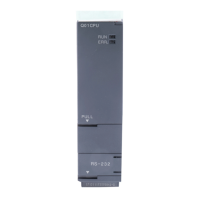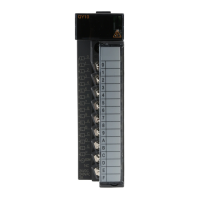A
- 10
SAFETY PRECAUTIONS•••••••••••••••••••••••••••••••••••••••••••••••••••••••••••••••••••••••••••••••••••••••••••••••••••••• A - 1
REVISIONS•••••••••••••••••••••••••••••••••••••••••••••••••••••••••••••••••••••••••••••••••••••••••••••••••••••••••••••••••••••••A - 9
INTRODUCTION •••••••••••••••••••••••••••••••••••••••••••••••••••••••••••••••••••••••••••••••••••••••••••••••••••••••••••••••A - 10
CONTENTS••••••••••••••••••••••••••••••••••••••••••••••••••••••••••••••••••••••••••••••••••••••••••••••••••••••••••••••••••••••A - 10
ABOUT MANUALS•••••••••••••••••••••••••••••••••••••••••••••••••••••••••••••••••••••••••••••••••••••••••••••••••••••••••••••A - 20
HOW TO SEE THIS MANUAL IS ORGANIZED••••••••••••••••••••••••••••••••••••••••••••••••••••••••••••••••••••••••••A - 23
HOW TO USE THIS MANUAL•••••••••••••••••••••••••••••••••••••••••••••••••••••••••••••••••••••••••••••••••••••••••••••••A - 25
GENERIC TERMS AND ABBREVIATIONS•••••••••••••••••••••••••••••••••••••••••••••••••••••••••••••••••••••••••••••••A - 26
CHAPTER1 OVERVIEW 1 - 1 to 1 - 28
1.1 Features •••••••••••••••••••••••••••••••••••••••••••••••••••••••••••••••••••••••••••••••••••••••••••••••••••••••••••• 1 - 10
1.1.1 Features of Basic model QCPU •••••••••••••••••••••••••••••••••••••••••••••••••••••••••••••••••••••••••• 1 - 10
1.1.2 Features of High Performance model QCPU •••••••••••••••••••••••••••••••••••••••••••••••••••••••••• 1 - 11
1.1.3 Features of Process CPU•••••••••••••••••••••••••••••••••••••••••••••••••••••••••••••••••••••••••••••••••• 1 - 13
1.1.4 Features of Redundant CPU•••••••••••••••••••••••••••••••••••••••••••••••••••••••••••••••••••••••••••••• 1 - 15
1.2 Program Storage and Operation••••••••••••••••••••••••••••••••••••••••••••••••••••••••••••••••••••••••••••••• 1 - 17
1.3 Devices and Instructions Convenient for Programming ••••••••••••••••••••••••••••••••••••••••••••••••••• 1 - 23
1.4 How to Check the Serial No. and Function Version•••••••••••••••••••••••••••••••••••••••••••••••••••••••• 1 - 28
CHAPTER2 PERFORMANCE SPECIFICATION 2 - 1 to 2 - 8
CHAPTER3 SEQUENCE PROGRAM CONFIGURATION AND EXECUTION CONDITIONS
3 - 1 to 3 - 83
3.1 Sequence Program •••••••••••••••••••••••••••••••••••••••••••••••••••••••••••••••••••••••••••••••••••••••••••••••••3 - 3
3.1.1 Main routine programs •••••••••••••••••••••••••••••••••••••••••••••••••••••••••••••••••••••••••••••••••••••••3 - 7
3.1.2 Subroutine programs •••••••••••••••••••••••••••••••••••••••••••••••••••••••••••••••••••••••••••••••••••••••••3 - 9
3.1.3 Interrupt programs •••••••••••••••••••••••••••••••••••••••••••••••••••••••••••••••••••••••••••••••••••••••••• 3 - 12
3.2 Settings for Execution of Only One Sequence Program •••••••••••••••••••••••••••••••••••••••••••••••••• 3 - 22
3.3 Settings for Creation and Execution of Multiple Sequence Programs •••••••••••••••••••••••••••••••••• 3 - 24
3.3.1 Initial execution type program••••••••••••••••••••••••••••••••••••••••••••••••••••••••••••••••••••••••••••• 3 - 26
3.3.2 Scan execution type program••••••••••••••••••••••••••••••••••••••••••••••••••••••••••••••••••••••••••••• 3 - 30
3.3.3 Low speed execution type program ••••••••••••••••••••••••••••••••••••••••••••••••••••••••••••••••••••• 3 - 33
3.3.4 Stand-by type program••••••••••••••••••••••••••••••••••••••••••••••••••••••••••••••••••••••••••••••••••••• 3 - 41
3.3.5 Fixed scan execution type program ••••••••••••••••••••••••••••••••••••••••••••••••••••••••••••••••••••• 3 - 46
3.3.6 Execution type setting and example of type changing ••••••••••••••••••••••••••••••••••••••••••••••• 3 - 52
3.4 Operation Processing •••••••••••••••••••••••••••••••••••••••••••••••••••••••••••••••••••••••••••••••••••••••••••• 3 - 58
INTRODUCTION
Thank you for choosing the Mitsubishi MELSEC-Q Series of General Purpose Programmable Controllers.
Before using the equipment, please read this manual carefully to develop full familiarity with the functions
and performance of the Q series PLC you have purchased, so as to ensure correct use.
CONTENTS

